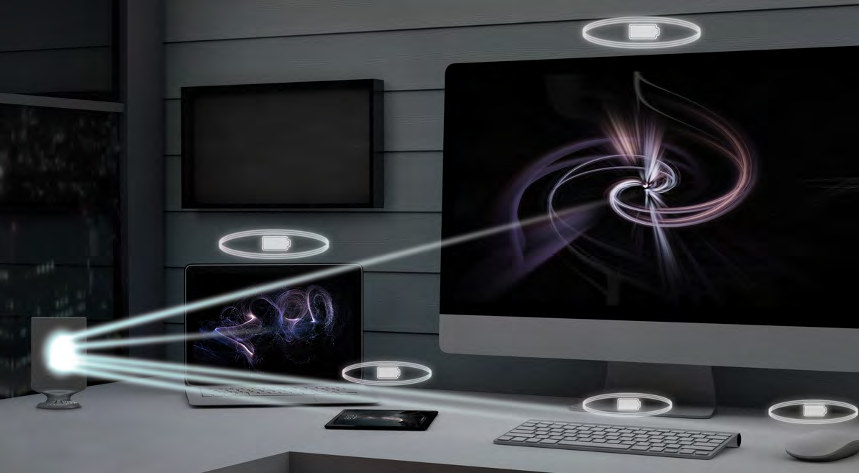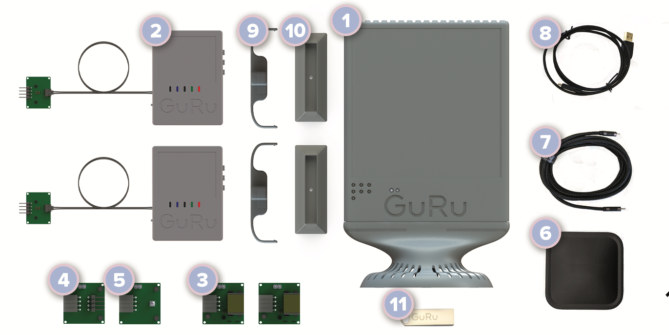Several companies are developing wireless power at-a-distance solutions with various ranges, from desk power/charging to factory sensor power, including Energous and TransferFi.
CNX Software has been contacted by another company working in the field with Guru Inc launching the GuRu mini evaluation kit capable of wireless power transmitting several watts within a desk using a 24 GHz chip.
There are very few details about the internals of the transmitter and receiver, but the company told CNX Software GuRu developed its own 24GHz chip built in a standard CMOS process. The chip is said to use “Smart RF Lensing power transfer, enabled via highly focused, intelligently-controlled millimeter waves” in order to increase both power transfer and range by up to 10 times, as well as deliver smaller and cheaper devices.
The (G3100-005-EVK) wireless power transfer evaluation kit is comprised of the following components/accessories:
- A generator unit (GU) suitable for desktop environment
- Two 5V recovery units (RU) with connector to adapter board (More units can be provided on request)
- Two USB load boards
- A header load board
- An LED load board
- A 15/20V USB-C power supply for the GU
- A 3-meter USB-C cable
- A 1-meter micro USB cable
- Two RU camera mount adapters
- Two RU stands
- Memory sticks and user manual
The GuRu name comes from Generator Unit (GU) and Recovery Unit (RU) which are respectively the transmitter and the receiver. The way I understand you’d then be able to connect loads to the RU either the LED board, USB devices or other devices connected via the LED board, and test/evaluation various range and power levels. The generator unit supports wireless
power transfer at-a-distance (WPT-AD) solution for multiple recovery units at the same time.
If you are interested, you can leave a request to obtain the company’s wireless power transfer evaluation kit.

Jean-Luc started CNX Software in 2010 as a part-time endeavor, before quitting his job as a software engineering manager, and starting to write daily news, and reviews full time later in 2011.
Support CNX Software! Donate via cryptocurrencies, become a Patron on Patreon, or purchase goods on Amazon or Aliexpress







These products only have commercial and industrial uses. Simply cannot be simultaneously safe and effective because of physics.
How long before this gets widely adopted then renamed as “Baby cooker” ?
Are there any info how much the EVK would be cost for research purpose?
There’s no public pricing. You’d need to contact the company and work something out.
The transmitter of this device is essentially the same thing as a 5G mm-Wave base station.
It is subject to stringent output power regulations near humans not just by the U.S. FCC, but by the ICNIRP (an international organization), of 1 mW/cm^2 (10W/m^2).
(See slide 3 of https://www.itu.int/en/ITU-T/Workshops-and-Seminars/20171205/Documents/S3_Christer_Tornevik.pdf)
For example, your smartphone may have about 100cm^2 of usable area, and so can only take in at most 100mW from this charger.
But then there will be RF-to-DC conversion losses of ~50%, resulting in ~50mW charging power. And this is a theoretical best-case (read: not real world) scenario.
Compare this to a 5-10W Qi wireless charger, and you will see why the approach described here is a non-starter for most of the applications shown in the article’s picture.
In other words, while the technology demo may work, it cannot be certified to operate at meaningful power levels under existing regulations.